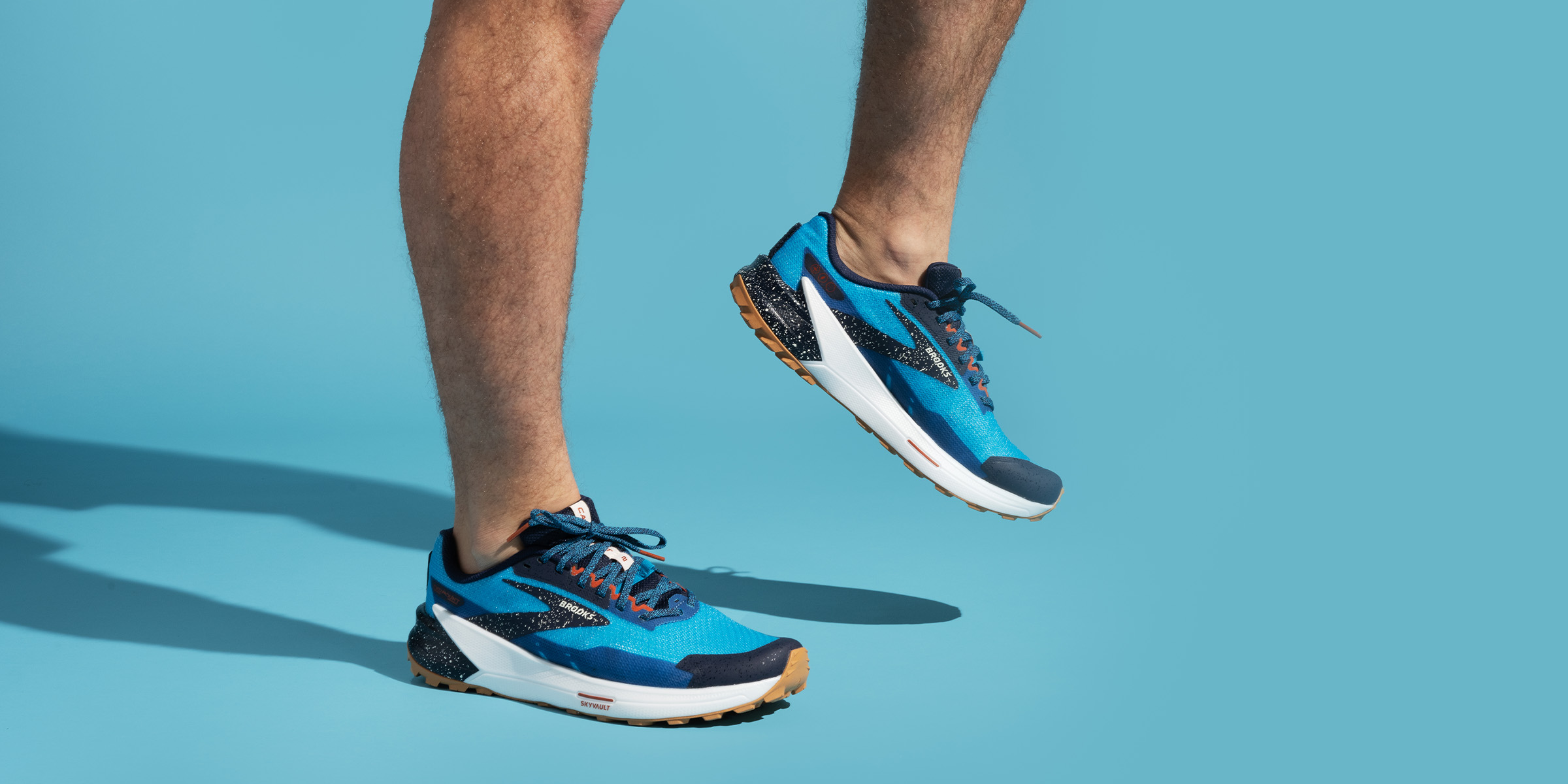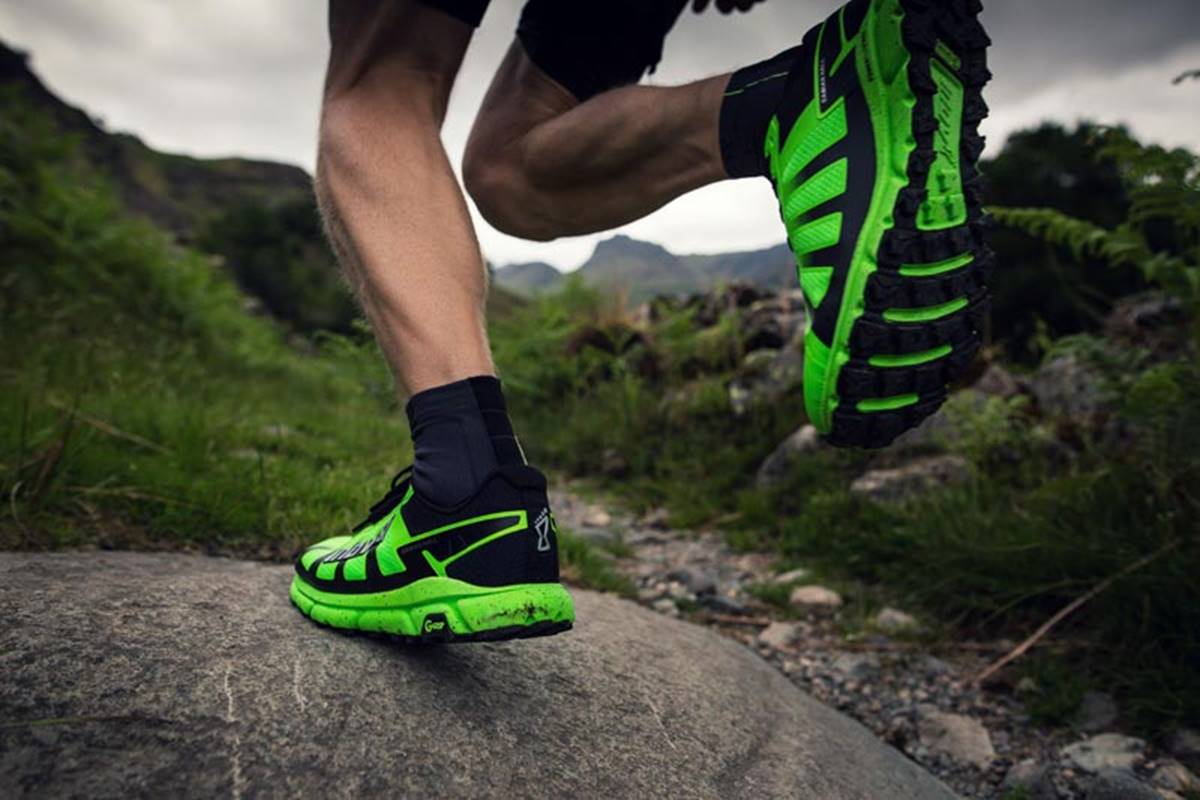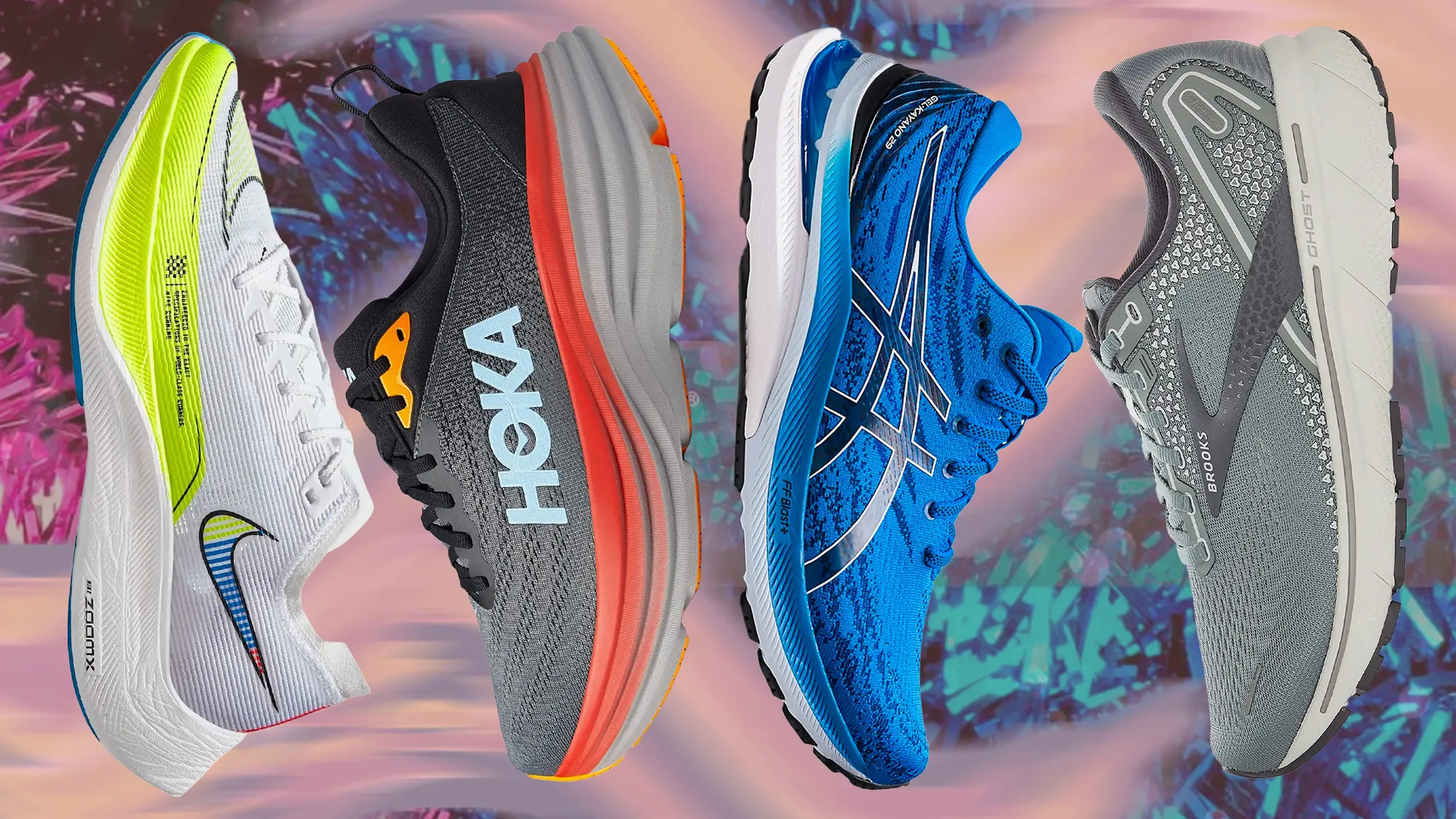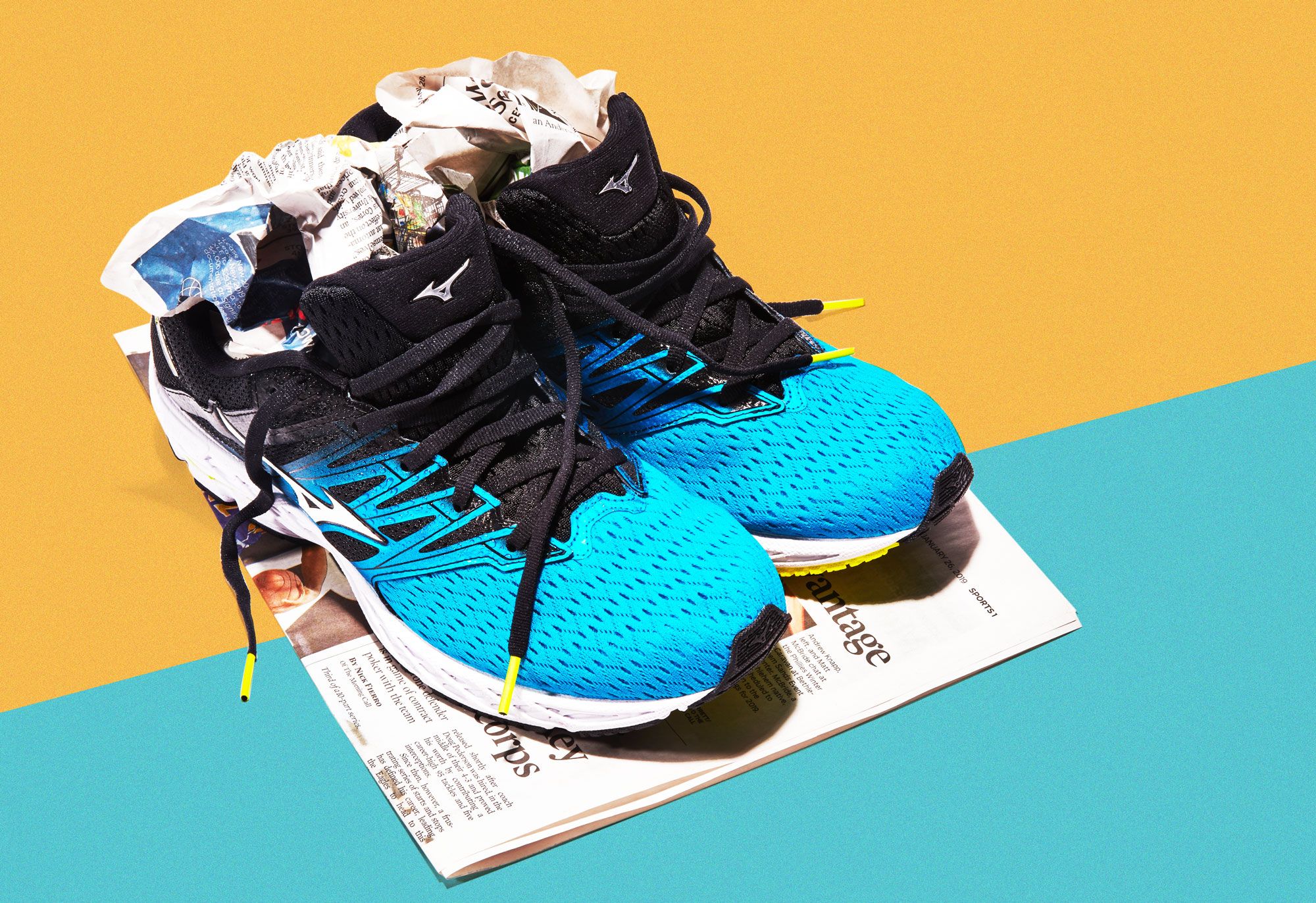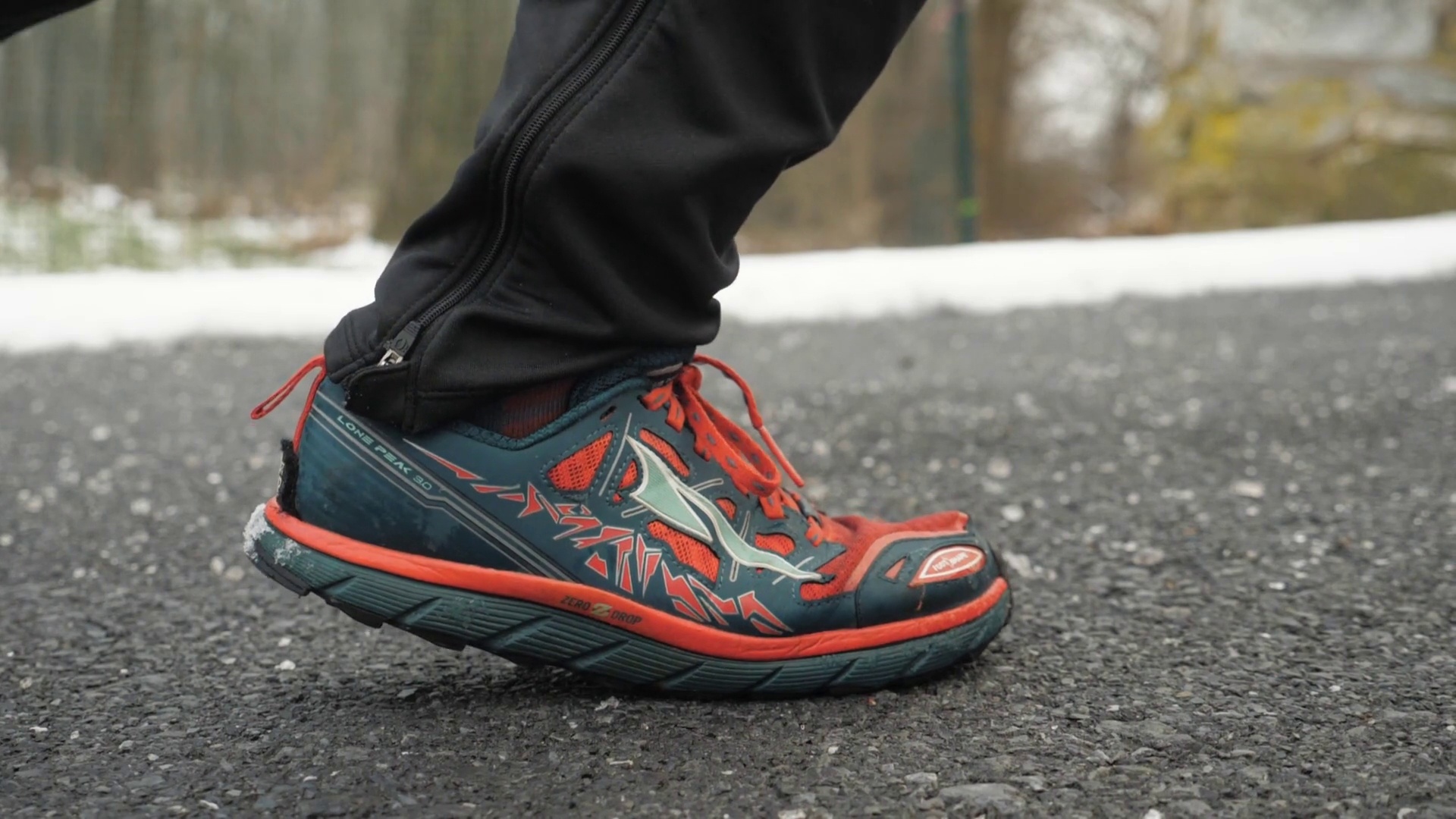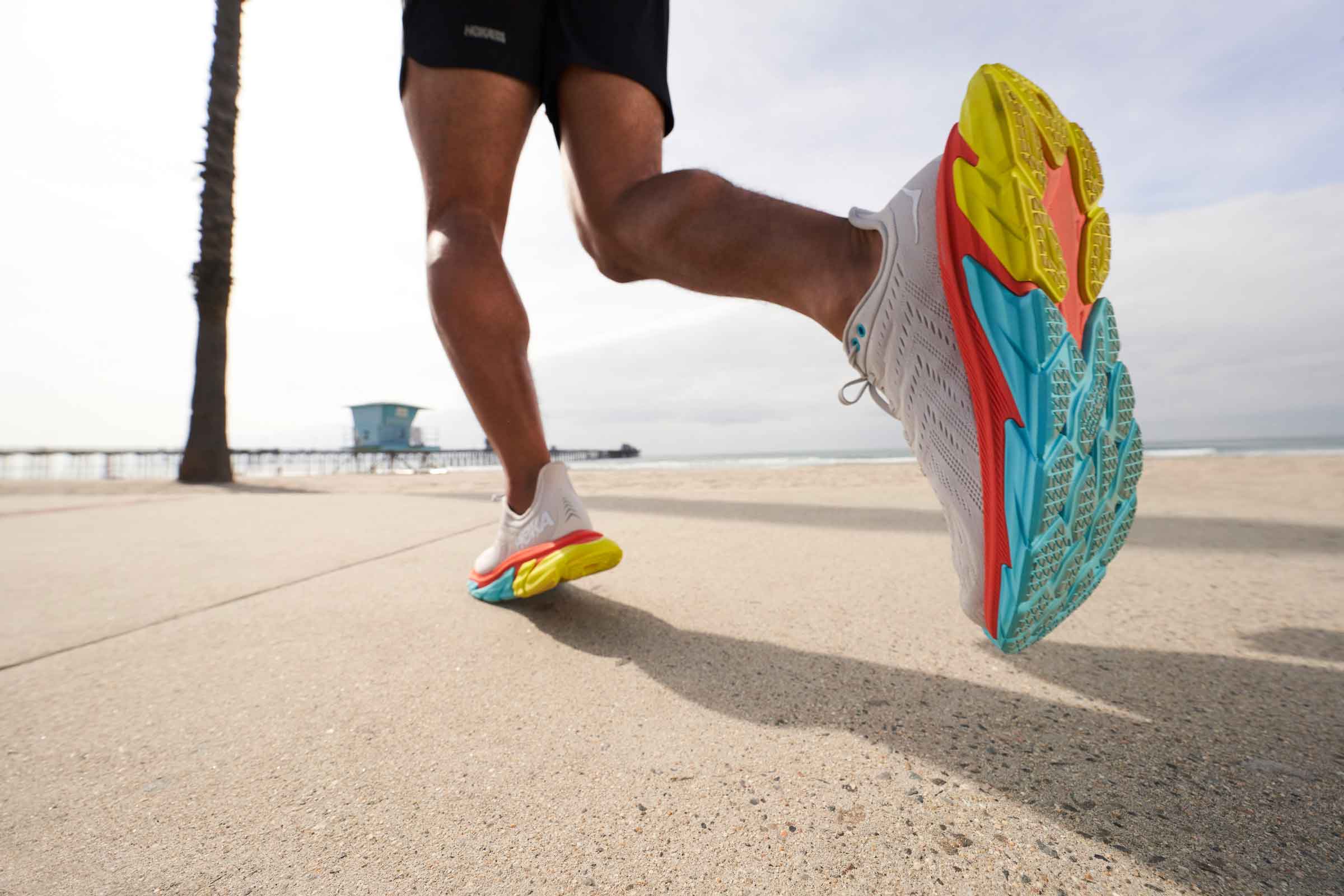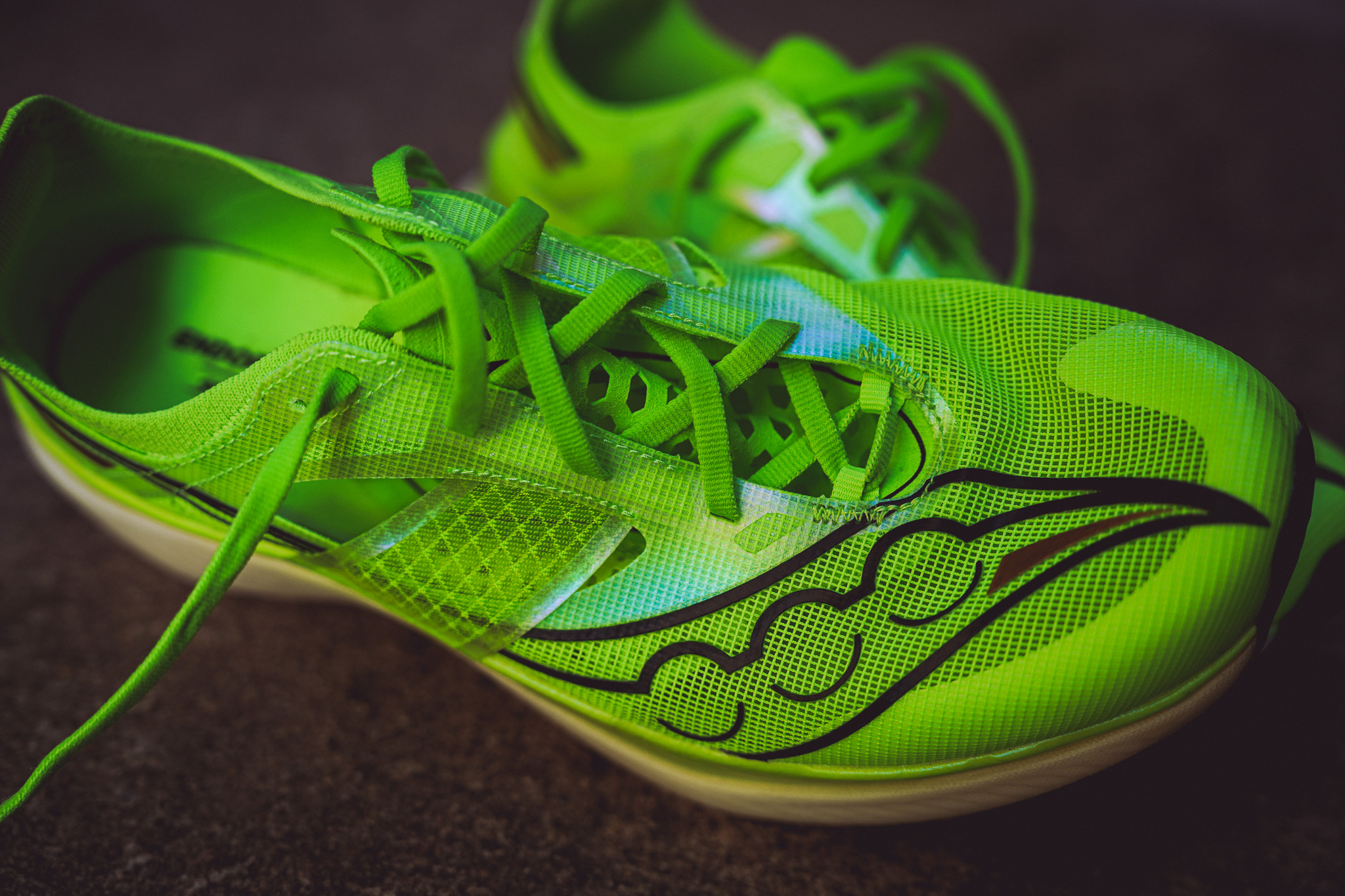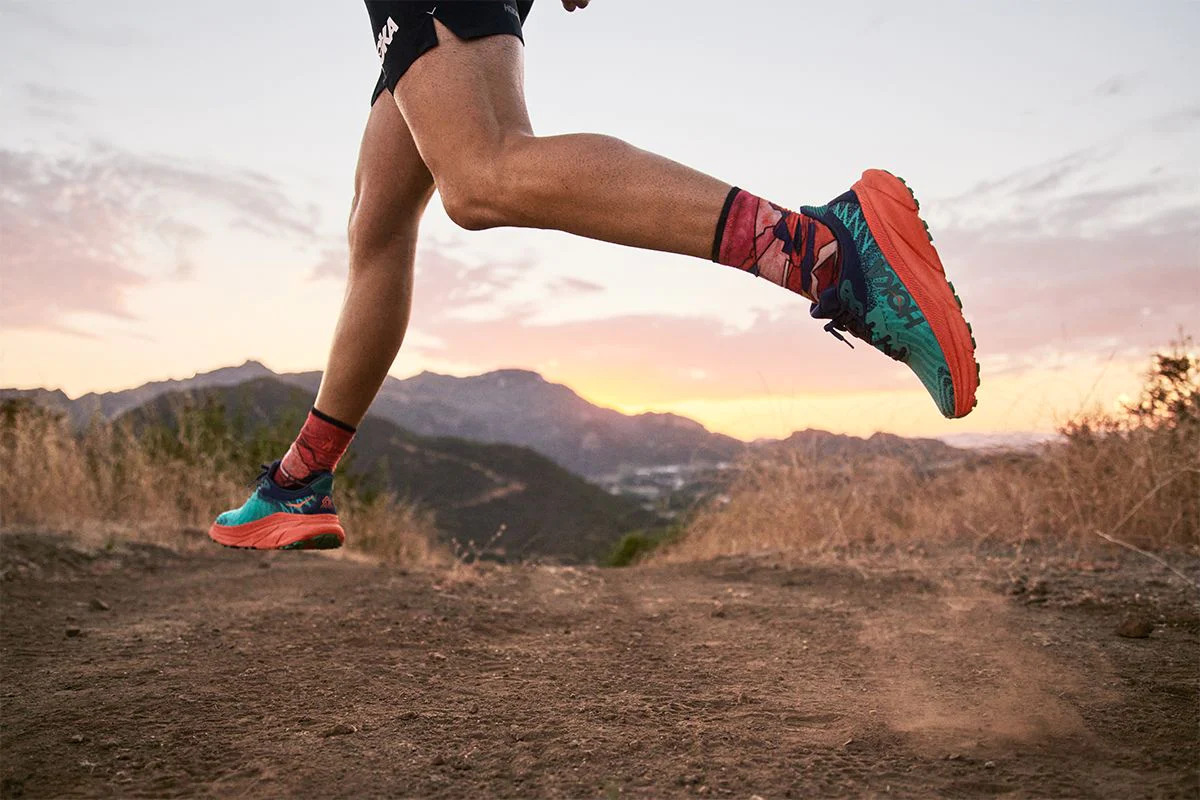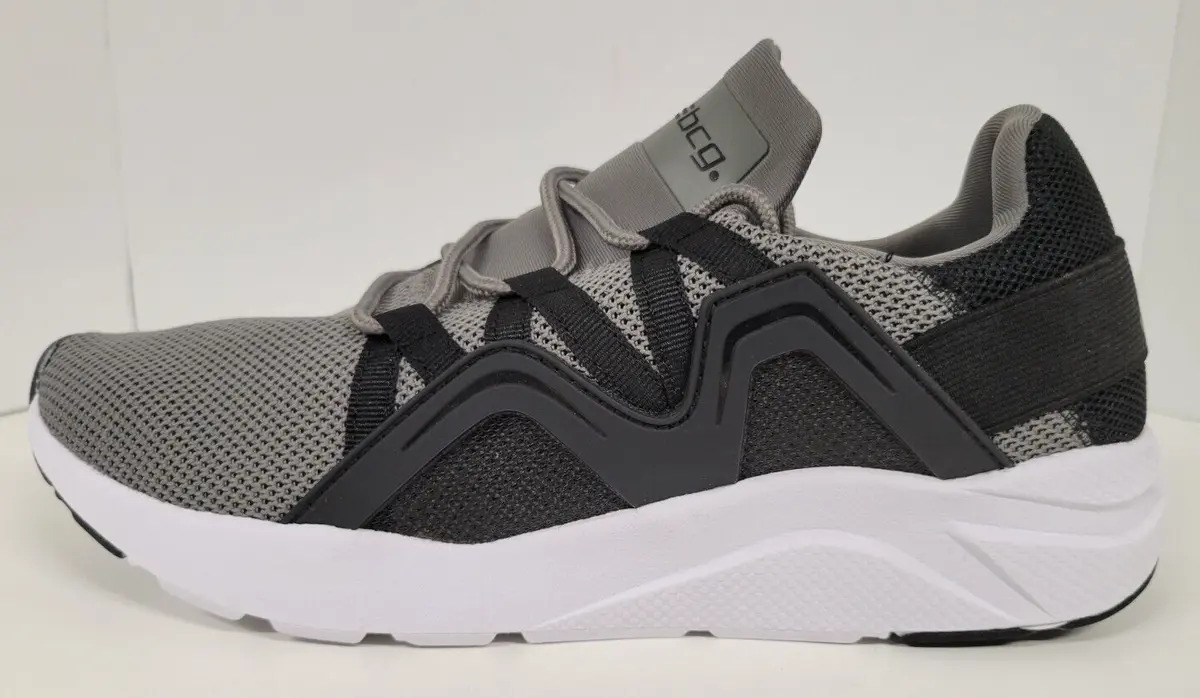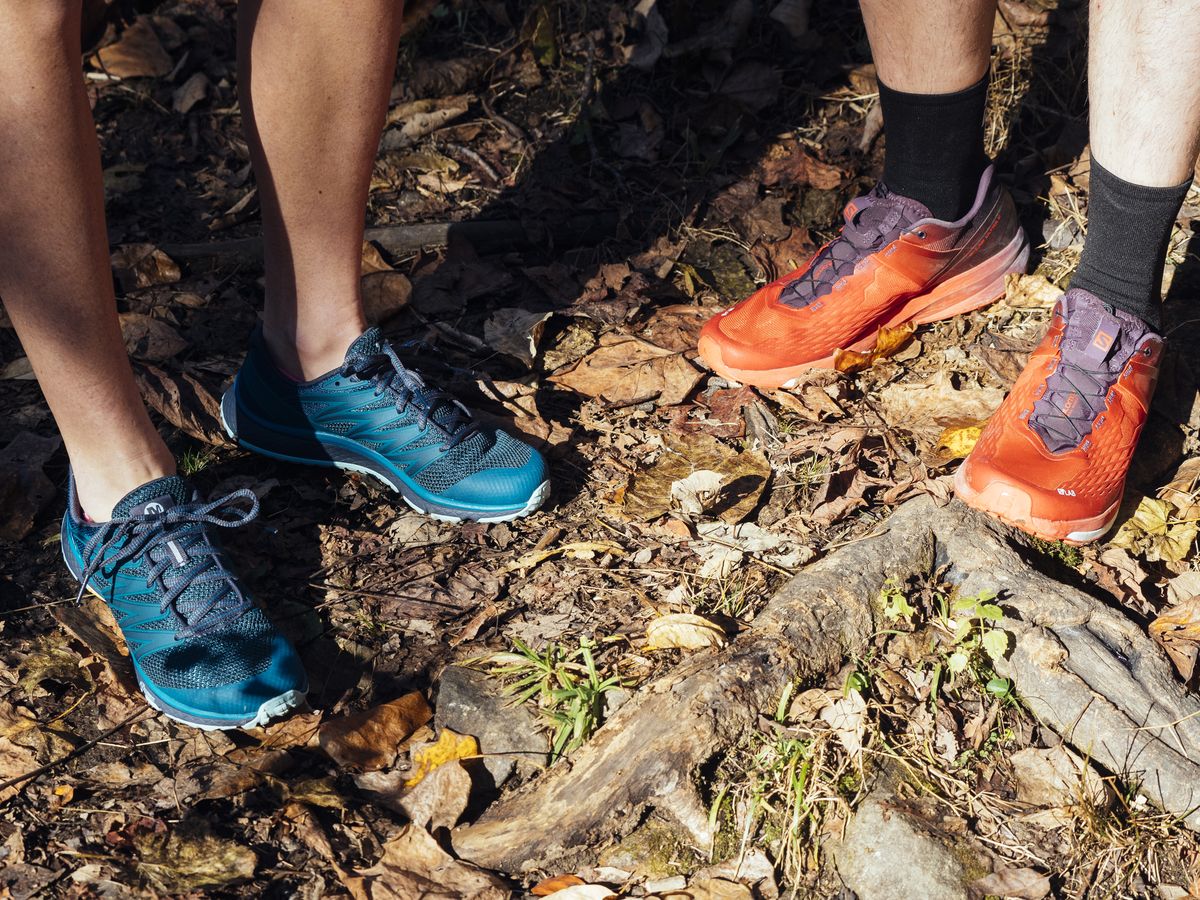

Featured
How Should Trail Running Shoes Fit
Modified: January 22, 2024
Discover the importance of proper fit for trail running shoes. Read our featured guide to find out how to ensure the perfect fit for your next adventure.
Introduction
Welcome to the world of trail running! Whether you are a seasoned runner looking for a new challenge or a beginner venturing off-road for the first time, one thing is clear: having the right fitting trail running shoes is essential for an enjoyable and successful experience.
Trail running shoes are specifically designed to tackle off-road terrains, providing stability, traction, and protection to your feet. However, beyond these features, one often overlooked aspect is the fit of the shoes. A proper fit is crucial for optimal performance, comfort, and injury prevention.
In this article, we will explore the importance of having a properly fitting trail running shoe and discuss the key factors to consider when choosing the right fit. From selecting the correct shoe size to assessing toe room, arch support, and heel fit, we will cover everything you need to know to ensure your shoes provide the perfect fit for your trail running adventures.
So, whether you’re planning to conquer rugged mountain trails or embark on a scenic forest run, read on to discover how you can find trail running shoes that fit like a dream and help you achieve your running goals while keeping you comfortable and safe along the way.
Importance of a Proper Fit
Having a proper fit is of utmost importance when it comes to trail running shoes. Your feet are your connection to the ground, and wearing ill-fitting shoes can lead to discomfort, pain, and even injury. Here are a few reasons why a proper fit is crucial:
- Comfort: The comfort of your feet during a trail run is essential for an enjoyable experience. Shoes that are too tight or too loose can cause discomfort, blisters, and hot spots.
- Stability: Trail running involves uneven surfaces, rocks, roots, and challenging terrains. Shoes that fit properly provide stability and prevent your feet from sliding around inside the shoe.
- Protection: Your feet endure a lot of impact and stress during trail running. A proper fit ensures that your shoes provide adequate protection, reducing the risk of injuries like ankle sprains or toe stubs.
- Efficiency: Shoes that fit well allow for better biomechanics, promoting efficient running form. This can help you conserve energy and improve your overall performance on the trails.
- Injury Prevention: Wearing shoes that don’t fit properly can lead to various foot and lower limb injuries. By providing the right support and alignment, well-fitting shoes can minimize the risk of common running injuries like plantar fasciitis, shin splints, and IT band syndrome.
It’s crucial to understand that everyone’s feet are different, and what works for one person may not work for another. Determining the right fit involves considering factors such as shoe size, toe room, arch support, heel fit, and ankle support. These factors will be discussed in detail in the following sections, helping you make informed decisions when selecting your trail running shoes.
Factors to Consider in Trail Running Shoe Fit
When it comes to finding the perfect fit for your trail running shoes, there are several factors that you need to consider. Let’s take a closer look at each of these factors:
- Shoe Size: Selecting the right shoe size is the first step in ensuring a proper fit. Remember that your trail running shoe size may differ from your casual shoe size, so always measure your feet and refer to the shoe manufacturer’s sizing chart for guidance. It’s advisable to have a thumb’s width of space between your longest toe and the end of the shoe.
- Toe Room: Sufficient toe room is crucial in preventing discomfort and toenail issues during long runs. Make sure there is enough space for your toes to wiggle and splay naturally while still maintaining a snug fit in the midfoot and heel areas.
- Arch Support and Midsole Fit: The arch support and midsole fit should match the shape and needs of your feet. For runners with high arches, look for shoes with adequate arch support. Conversely, those with low arches may benefit from shoes with more flexibility and less arch support.
- Heel Fit and Lockdown: The heel should fit snugly without any slippage or rubbing. A secure heel fit ensures stability and minimizes the risk of blisters. Look for shoes with heel counters or features like heel loops or cups to provide optimal lockdown.
- Ankle and Achilles Support: Trail running involves uneven terrain, rocks, and obstacles. Ankle and Achilles support are important factors to consider to prevent injuries. Look for shoes that offer adequate ankle support and cushioning around the Achilles area.
It is essential to try on different brands and models of trail running shoes to find the best fit for your unique feet. Additionally, consider visiting a specialized running store for professional fitting assistance. The experts there can assess your gait and foot shape, offering personalized recommendations to help you find the perfect pair of trail running shoes.
Choosing the Right Shoe Size
Choosing the correct shoe size is a fundamental aspect of finding the perfect fit for your trail running shoes. Here are some tips to help you select the right shoe size:
- Measure your feet: Start by measuring the length and width of your feet. Remember that feet can change over time, so it’s important to measure both feet each time you buy new shoes.
- Refer to the sizing chart: Different shoe brands may have slight variations in sizing, so always refer to the manufacturer’s sizing chart. Use your foot measurements as a guide to determine your shoe size.
- Consider toe room: Allow for about a thumb’s width of space between your longest toe and the end of the shoe. This ensures enough room for your toes to move and prevents discomfort or bruised toenails during long runs.
- Try on shoes in the afternoon: Feet tend to swell throughout the day, so it’s best to try on shoes in the afternoon when your feet are at their largest. This helps avoid purchasing shoes that feel too tight.
- Try on multiple sizes: Different shoe models may fit differently, even within the same brand. It’s a good idea to try on at least half a size up and half a size down from your measured size to see which feels the most comfortable and secure.
- Consider the use of socks: If you typically wear thicker or cushioned socks during trail running, make sure to wear them when trying on shoes to ensure the right fit. This accounts for any additional space needed inside the shoe.
Remember that your shoe size may not be the same across all brands or models. Be open to trying different options and don’t solely rely on the number when choosing your trail running shoes. Prioritize the overall fit and comfort rather than sticking to a specific size.
If you are unsure about your shoe size or are between sizes, it’s always a good idea to consult with fitting experts at a specialized running store. They can provide valuable guidance and recommendations based on your foot shape, running style, and preferences.
Toe Room and Width
Ensuring adequate toe room and width in your trail running shoes is essential for overall comfort and foot health. Here’s what you need to know:
Toe Room: When it comes to trail running, your toes need space to move and splay naturally. Shoes that are too narrow or have a shallow toe box can lead to discomfort, numbness, and even painful conditions like bunions or neuromas. Look for shoes that provide enough room in the toe box area so that your toes can wiggle freely while still maintaining a snug fit in the midfoot and heel.
Width: In addition to toe room, the width of the shoe is also crucial. Not all feet are the same width, and having shoes that are too narrow or too wide can lead to rubbing, blisters, and discomfort during your runs. Most shoe brands offer different width options to accommodate a variety of foot shapes and sizes. If you have wider feet, look for shoes that come in wide or extra-wide widths for a more comfortable fit.
To determine if a shoe provides adequate toe room and width, consider the following:
- Stand up and ensure there is about a thumb’s width of space between your longest toe and the end of the shoe. This allows for enough room for natural movement without the risk of toe jamming on steep downhills.
- Check if your toes can wiggle freely without feeling squeezed or restricted by the sides or top of the shoe.
- Oftentimes, shoes with a slightly wider toe box can provide more accommodating room for your toes.
- Be mindful of any pressure points or rubbing that might occur on the sides or top of your feet, as this can indicate a shoe that is too narrow.
Remember, your feet may swell during long runs or in hotter weather, so it’s important to choose a shoe with enough room to accommodate any potential changes in foot size throughout your run. Always prioritize comfort and proper fit when selecting the toe room and width of your trail running shoes.
Arch Support and Midsole Fit
Arch support and midsole fit are crucial factors to consider when choosing the right trail running shoes. They play a significant role in providing stability, comfort, and injury prevention. Here’s what you need to know:
Arch Support: The arch of your foot acts as a natural shock absorber during running, and having proper support can help align your feet and prevent issues like overpronation or underpronation. Pronation refers to the natural inward rolling motion of the foot as it absorbs impact. However, excessive pronation or inadequate support can lead to imbalances and potential injuries.
When assessing arch support, consider the following:
- If you have low arches (flat feet), look for shoes that offer more stability and motion control. These shoes typically feature firmer midsoles and supportive structures to prevent excessive rolling.
- If you have high arches, your feet are more rigid, and you may require shoes with more cushioning and flexibility to absorb shock and provide adequate support.
- Many trail running shoes come with different levels of arch support to cater to different foot types. Consider your arch height and how much support your feet need when choosing a shoe with the appropriate arch design.
Midsole Fit: The midsole of a trail running shoe is the layer between the outsole and the upper, responsible for cushioning, support, and stability. It is important to ensure that the midsole fits your foot shape and provides the right level of cushioning and responsiveness.
When assessing midsole fit, pay attention to the following:
- Ensure that the midsole provides sufficient cushioning and shock absorption for your running style and preference.
- A midsole that is too soft may lack stability and responsiveness, while a midsole that is too firm can feel uncomfortable and unforgiving.
- Consider the type of terrain you will be running on. For more rugged or technical trails, a stiffer midsole can provide better protection and stability.
- Flexibility in the midsole is also important to allow for proper foot movement and natural gait cycle during running.
It is recommended to try on different shoe models to find the right arch support and midsole fit for your feet. Some runners may even benefit from custom orthotics or insoles to provide additional support and enhance the fit of their trail running shoes.
Remember, a properly fitting trail running shoe with the right arch support and midsole fit can help promote healthy foot mechanics, prevent overuse injuries, and provide a comfortable running experience on the trails.
Heel Fit and Lockdown
Ensuring a secure and comfortable heel fit is essential for stability and preventing blisters or discomfort during your trail runs. The heel area of the shoe should provide a snug and supportive fit without any slippage. Here’s what you need to know about heel fit and lockdown:
Heel Fit: The heel fit refers to how well the shoe grips your heel and prevents it from moving excessively within the shoe. A secure heel fit is important for stability and control, especially when navigating challenging terrains or steep descents.
To assess the heel fit, consider the following:
- A properly fitting shoe should hold your heel comfortably, without any rubbing or slippage as you walk or run.
- Check for any excessive movement of the heel when walking or running. If your heel lifts or slides around, it can lead to blisters and instability.
- Ensure that the shoe securely wraps around the sides and back of your heel, providing a snug and locked-in feel.
Lockdown: A good shoe should have features or mechanisms that enhance the lockdown in the heel area, securely holding your foot in place. This prevents your foot from moving around during your runs.
Consider the following when assessing the lockdown of a shoe:
- Look for shoes with heel counters or heel loops that provide additional support and stability in the heel area.
- Lacing systems that allow for customized tightening around the heel can contribute to a secure lockdown.
- Ensure that the shoe has sufficient padding and cushioning around the heel collar, offering a comfortable and secure fit.
- Try different lacing techniques to ensure the proper fit and lockdown, such as the runner’s loop or heel lock techniques.
A proper heel fit and lockdown minimize the risk of blisters, reduce foot fatigue, and enhance overall running performance. It is crucial to find a shoe that provides a secure and comfortable fit in the heel area, enabling you to focus on your run without any distractions or discomfort.
Ankle and Achilles Support
When it comes to trail running, having adequate ankle and Achilles support is crucial for stability and injury prevention. The uneven and unpredictable terrains that trail running often entails can put strain on these areas. Here’s what you need to know about ankle and Achilles support:
Ankle Support: The ankle joint is susceptible to twists and sprains, especially on uneven and unstable surfaces. Proper ankle support in your trail running shoes can help minimize the risk of such injuries and provide stability as you navigate challenging trails.
Consider the following for ankle support:
- Choose shoes with higher ankle collars that extend above the ankle bone. These can provide additional support and help prevent the ankle from rolling.
- Ensure that the ankle collar is padded and cushioned to provide comfort and prevent rubbing.
- Some trail running shoes come with external support structures or straps around the ankle area, which can offer enhanced stability.
Achilles Support: The Achilles tendon, located at the back of your heel, can be prone to injuries, such as Achilles tendonitis or strains, due to the repetitive stress in running. Proper support in the Achilles area is crucial for preventing these issues.
To assess Achilles support:
- Look for shoes with adequate cushioning and padding in the Achilles area to help reduce pressure and friction.
- The shoe collar should be soft and protective, without causing any irritation or rubbing on the Achilles tendon.
- Consider shoes that have heel cups or pressure relief features specifically designed to support the Achilles tendon.
Proper ankle and Achilles support in your trail running shoes can enhance your stability, reduce the risk of injuries, and provide a more comfortable running experience. It is important to find a shoe that offers the right level of support without restricting your natural range of motion.
If you have had previous ankle or Achilles injuries or have specific concerns, consult with a healthcare professional or specialized running store expert for personalized advice and shoe recommendations.
Testing the Fit
Once you have selected a pair of trail running shoes that meet your size, toe room, arch support, midsole fit, heel fit, and ankle support requirements, it is essential to thoroughly test the fit before making your final decision. Here are some key steps to ensure the shoes fit properly:
- Walk and jog: Take a few steps and walk around in the shoes. Pay attention to any discomfort, pressure points, or rubbing that you may feel. Jog lightly to assess how the shoes perform during a gentle run. Make sure there is no slipping or excessive movement in the shoes.
- Try different terrains: If possible, test the shoes on various surfaces that you typically encounter during trail running, such as dirt trails, rocky paths, or uneven terrain. This will help you evaluate the shoes’ traction and stability.
- Ascend and descend: Practice walking or running uphill and downhill to assess the shoes’ performance on different gradients. Ensure that your feet feel secure, and your toes are not hitting the front of the shoe while descending.
- Check for stability: Perform lateral movements or quick changes in direction to test the stability of the shoes. Your ankles should feel supported, and the shoes should provide reliable support to prevent any rolling or twisting.
- Assess comfort and flexibility: Pay attention to how comfortable the shoes feel throughout the test. Ensure that there is enough cushioning to provide shock absorption, but not so much that it feels excessive. The shoes should also offer a reasonable level of flexibility to allow natural foot movement during your runs.
- Consider any changes over time: Keep in mind that shoes may require a short break-in period. Consider whether there may be any changes in the fit or comfort level after a few runs.
By thoroughly testing the fit of your trail running shoes, you can confidently determine whether they meet your requirements and provide a comfortable and supportive experience. If you experience any issues during the testing process, consider trying on different sizes, styles, or brands until you find the perfect fit for your feet and running needs.
Conclusion
Choosing trail running shoes that fit well is essential for an enjoyable and successful running experience. A proper fit provides comfort, stability, and injury prevention, allowing you to tackle even the most challenging terrains with confidence. By considering factors like shoe size, toe room, arch support, midsole fit, heel fit, ankle support, and thoroughly testing the fit, you can find the perfect trail running shoes for your feet.
Remember that every runner’s feet are unique, and what works for one person may not work for another. It is crucial to prioritize your comfort and individual needs when selecting trail running shoes. Consider visiting a specialized running store for professional fitting assistance, as their expertise can help guide you towards the most suitable options.
Once you find trail running shoes that fit well, be sure to break them in gradually and listen to your body during your runs. Pay attention to any discomfort or issues that may arise and address them promptly to prevent potential injuries.
By investing the time and effort into finding trail running shoes with a proper fit, you can enjoy your off-road adventures to the fullest, confident that your feet are supported, protected, and ready to conquer any trail that lies ahead.
